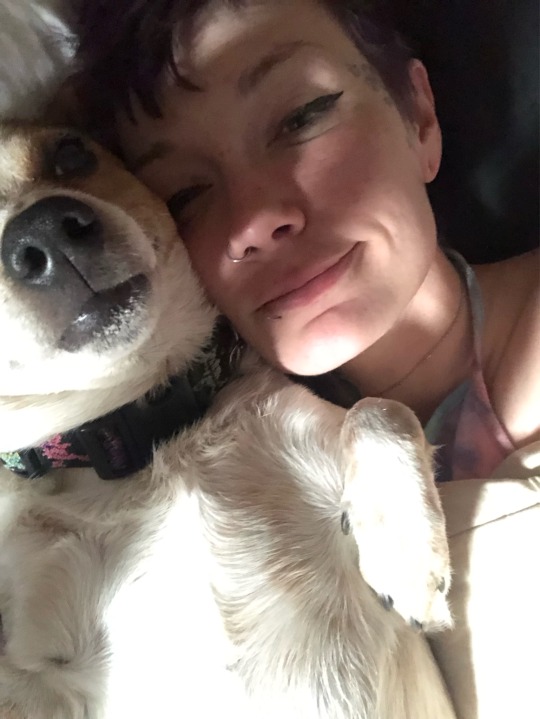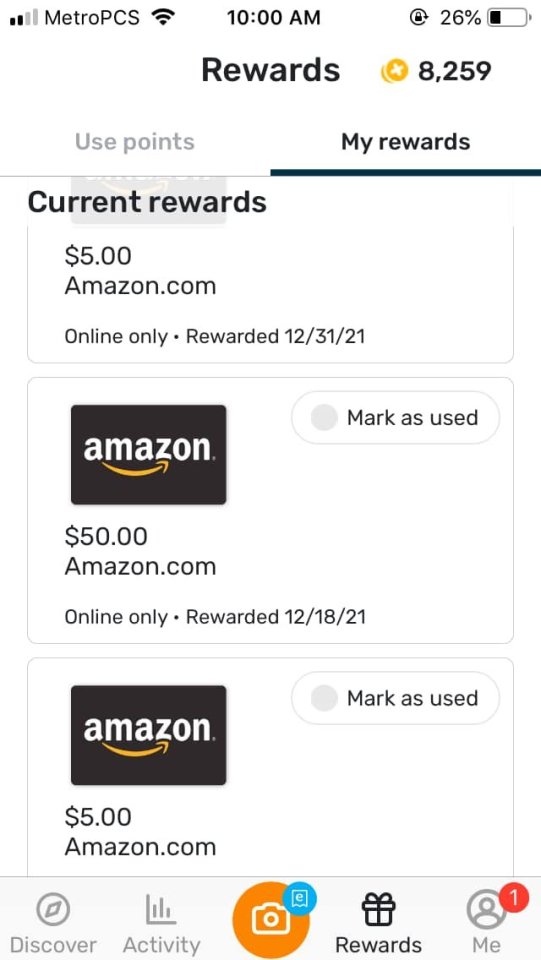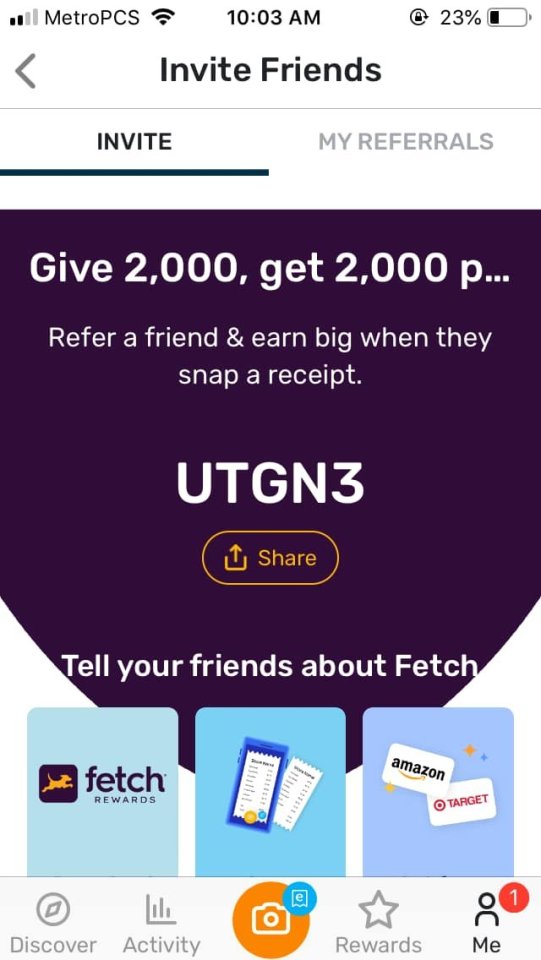#side gigs
Text
Hello everyone :) i can do a myriad of things such as make candles, sigils and spell jars; custom art like collages, drawings, paintings, pressed flowers (albeit its not that good); write poetry, do spell work; and can proofread. In other words, I’m open to suggestions. ‼️‼️
so if you need any of those things please hmu my tip jar is open and I am ready for …. Commissions??
Help your local crazy gardening witch afford to survive the month ☺️🌻🎉
Weeeee! 🤠




80 notes
·
View notes
Text
January 10, 2024
She – with the help of two-time Olympic ice dance champion Scott Moir among others – has entered a new phase of skating.
“I've tried to unlock a little bit maturity this year in my performances,” she says. “[The choreographers] have helped me a lot to learn how I want to portray characters and how I want to skate more so than just how I want to perform my tech elements. I've really enjoyed that.”
Madeline Schizas on working with Scott Moir and co.
It’s not lost on Schizas, however: She knows how awesome it is to be working so closely with one of the great modern minds of the sport in Moir.
“Working with Scott is really cool,” she admits, that coy smile returning before she turns reflective again. “One thing that Scott always says is, ‘The goal for me and Tessa [Virtue] was for us to make people feel something.’ I’ve been trying to tap into that, [but] it’s not something that I think I’m great at at this point in my career, the emotion, the performance side.”
Which is part of the reason why Schizas chose to work with Moir and his team in London, Ontario, including Olympic bronze medallist Madison Hubbell and Spanish ice dancer Adrian Diaz.
That trio helped Schizas develop her Farrucas short program, the same music that Virtue/Moir skated to at Vancouver 2010 for their original dance.
[...]
The benefit of her five-wide choreo team is as much for the future of Schizas’s skating as it is the present: “Those guys have been really helping me come up with a story and emotion to put behind my skating,” she says. “I think that it’s paid off; it’s been a fulfilling experience for me.”
—Olympics
10 notes
·
View notes
Text
From fanfic to paycheck: Finding gigs as a freelance copywriter
All right, you've decided you want to be a copywriter. You know the pros and the cons of the job, and you've decided you're not interested in a corporate gig. Instead, you're determined to earn money your way: as a freelancer.
Let's talk about what it means to be a freelancer, the ups and the downs of the freelancer lifestyle, and how to find work as a freelancing copywriter.
Overall, there are four main types of freelancing, and we'll work through them from easiest to hardest.
Part-time contract freelancer
If you're looking to dip your toes into any type of freelancing, copywriting or other, this is one of the easiest routes to take.
You'll start by selecting a staffing agency to work with. There are a ton out there! Well-known creative services staffing agencies include Aquent, Creative Circle, Vitamin Talent, Artisan Talent, iCreatives, Sparks Group, etc. Do some research -- consider not just the large, national agencies, but any smaller regional agencies that might be in your area. If you're just starting out, smaller agencies may be more willing to take on junior copywriters and help you grow in your career.
How should you pick your agency? Start by reading reviews (Glassdoor and Google reviews can be helpful), browsing their websites to learn about their policies and processes, and seeing what kind of roles they are looking to fill.
If you want to know more about an agency, look them up on LinkedIn. See if you can find someone who works for them with the title like recruiter, talent acquisition, sourcing, etc. Then send a message expressing your interest or asking a question! Keep it short and professional, but these people are always looking for new talent. They will likely respond to your inquiry, especially if you have a nice LinkedIn profile that showcases your abilities (use the same resume tips from my last post to build your LinkedIn profile).
Once you've picked an agency (or agencies), there are typically two routes to finding work:
Some agencies will simply let you register as available talent, upload your resume, and fill out a survey about your skills, interests, and availability. As with corporate copywriting roles, it's best if you have a portfolio you can share (better still if you have a professional website to host your portfolio). Then, if they have any jobs that look like a match, they'll reach out and contact you.
Other agencies will have a website listing all the jobs they currently have open, and you can apply to any openings you find interesting. In general, even if you don't get the job you applied for, they will keep your resume in their database and contact you if they have any similar roles open up in the future.
Note that certain agencies will ask you to sign an exclusivity contract, meaning that you will only accept jobs through that agency; other agencies will allow you to be on the books of multiple agencies simultaneously.
The nicest part about a staffing agency is that they will find clients for you, handle invoicing, taxes, etc. Many will even take care of scheduling interviews for you; all you need to do is show up and shine! Depending on how many hours you work, your agency might also provide benefits like health care, dental care, paid time off, etc.
Another benefit of agency work is that you can get work not available to independent freelancers. Several large companies (like the Fortune 500 I work for) will not hire independent freelancers for any projects; all their freelance work goes through staffing agencies. In my role, I actually have three freelancers contracted through my preferred agency who handle various projects for me. The projects they work on were never publicly posted -- I just went to my preferred agency, told them what I needed, and the agency connected me with matching freelancers.
The downside is that your staffing agency will take a cut of your hourly rate, so you might not take home as much money per hour as you would if you were an independent freelancer. However, most agency roles still pay very well (for example, the agency might charge $45 for an hour of your time; you might get paid $35 per hour -- that's still about $70,000 per year if you're working 40-hour weeks).
In addition, contract freelance work can be quite unstable. Sometimes I have no work for my contractors, or as little as 15 minutes of work for the whole week; sometimes I have 45+ hours of work in one week for a single contractor. Now, all of my contractors have multiple clients, so if I don't have work for them, it doesn't mean they're not working at all. I've even had my contractors turn down projects because they had so much other work from other clients. So, although these contracts are "part-time" for me, they are mostly working "full-time" when they consider all their projects from all their different clients.
Full-time contract freelancer
This is almost identical to the "part-time contract freelancer" role, except this freelancer works for only one company at a time. All the work is still routed through a staffing agency, but you only have one client who provides you with a steady stream of work (typically 35 or 40 hours per week). Often contracts with clients are for specified periods of time, with 6 months and 1 year being the most common.
Part-time independent freelancer
If you already have a full- or part-time job and don't want to make the career change to being a full-time copywriter, then the part-time independent freelancer can be a great way to build your skills, reputation, and portfolio without making your finances entirely dependent on your ability to secure work as a copywriter.
Many part-time freelancers take on freelancing as a "side hustle" in addition to a full-time job, schooling, stay-at-home parenting, or other full-time occupation. This can be a way to boost your regular income, or to save up for a special project, trip, or purchase.
If you do have a full-time job and want to freelance as a part-time copywriter, make sure your current job allows you to have a second job. Some companies have zero restrictions about freelancing on the side. Some companies will allow it, but only if you are not freelancing with competitors or other companies in the same industry. Some companies do not allow it at all and will discipline (or even fire) you for violating policy.
As an independent freelancer, you will be responsible for finding your own clients -- and negotiating your rates, tracking hours, creating and sending invoices, managing projects and timelines, chasing after unpaid invoices, etc. Note that you only get to charge clients for the hours you spend working on their projects. All those other tasks? That's "unpaid" administrative work that eats your time and doesn't make you any money. Plus you'll have to pay self-employment taxes on any income you do make from your copywriting projects.
The toughest part about this role will be finding work, especially if you want steady work. Unfortunately, I don't have a magical solution for this dilemma.
Here are some tips for finding clients:
If you're already working, you can casually mention to colleagues that you freelance. Do not try to sell your services in your workplace; this will likely violate your company's policies. This is more like, if someone asks what you're up to this weekend, you can mention that you're planning to work on your freelancing gig. The idea here is that if your colleagues move onto other companies that need freelancers, they might remember your name and recommend you (this is how I've gotten the majority of my clients).
Be sure to list that you freelance and are accepting clients on your LinkedIn. Another option is to make posts to your network advertising what services you're offering.
You can also look into listing your services on an online talent marketplace, like Fiverr, Upwork, FreeUp, Freelancer.com, etc. Truthfully, I've never used any of these websites to advertise my own work (I get almost all my clients through word of mouth), but they are options for beginning freelancers.
Network with other freelancers. For example, I don't do graphic design, but I know several freelancers who do. When I have a client who asks for graphic design services, I will recommend one of the freelancers in my network. Frequently, when those graphic designers get requests for writing services, they'll recommend me and I get a new client! I also know several other writing freelancers. When I'm too busy to take on a new client or a new project, I'll recommend another writer, and they will often recommend me in return when they're too swamped.
Another option is to reach out to creative service agencies and/or businesses you're interested in working with. Creative agencies often take on more work than they can actually complete, and they use freelancers to manage the excess. Look on LinkedIn to see if you can figure out who might be in charge of hiring, and see if you're able to connect and send them a brief message outlining your services. However, don't be surprised if you get very few replies, as you are essentially cold calling. (I get LinkedIn messages like this all the time; I ignore most of them, but occasionally I do respond.)
How much you earn as a part-time independent freelancer will depend on how much you work. For example, I cap my freelancer work to 10 hours per month, since I already have a full-time job, and I don't want to spend all my time working. This puts a limit on my freelance income, but helps me maintain my sanity.
Especially for your first few jobs, it can be really hard to figure out what rate you should charge -- or how you should set up your "rate card."
What's a rate card? It's a document that shows how much you charge for different services. For example, on my rate card, I have a flat hourly fee. This is what I charge for consultations and ad hoc work. Some clients also prefer to pay by the hour for my writing, in which case this is the hourly rate I charge.
However, my rate card also has per-project based pricing. I have a flat price for a medium blog post (between 600-1,200 words), for a long blog post (1,200-2,000), for a one-sided advertising flier, for a double-sided advertising flier, and for a basic campaign landing page. Some clients to prefer to pay by the project, because then they know exactly what their costs will be.
How much you charge is going to depend a lot on your specific skills, experience, and overall demand for your services. When you're setting your rates, don't think about how much you "should" charge. Think about how much your time is worth. If you get the project, but earn less than minimum wage completing the project, was it really worth it? You likely could have made more picking up a shift at your local fast-food joint.
Remember, as you grow as a freelancer, you will be able to increase your rates over time (I typically revise my rates every 1-2 years). The rates you set now don't have to be your rates forever.
Full-time independent freelancer
This is your classic, self-employed small business owner where their primary source of income comes from their freelance work. Full-time independent freelancers are often one-person businesses, where that one person has to do all their own marketing, accounting, project management, etc. Most individuals who choose this route have prior experience copywriting in a corporate role, either as part of a in-house team or in an agency, and have an extensive network of existing clients.
Working as a full-time independent freelancer is essentially the same as working as a part-time independent freelancer, except freelance becomes your sole source of income.
If you have never worked as a copywriter before, it will be exceptionally hard to jump straight to being a full-time independent freelancer.
One of the biggest risks that comes with being a full-time independent freelancer is that your income is not stable or guaranteed. You could have a ton of work, or you could go months without a client. Some years you could make a lot of money, and some years you might barely make any.
However, the biggest reward is that you're in complete control of your work. Want to take two weeks for a lengthy vacation? Don't feel like working today because you have a headache? Prefer to work in the wee hours of the night, rather than during the standard 8 to 5? No worries: You are your own boss, and you get to decide what you do, when you do it, and how you do it.
After reading all of this, if you're convinced that freelance work is what you want to do, you might still have one question -- what type of work do you want to do? What type of work can you do?
The reality is that most clients are not looking for fiction writers.
Luckily, there is one type of copywriting that's in high demand and that most fanfic writers should be able to pick up easily: SEO copywriting.
Previously: Getting a job as a copywriter
Next: How to apply your fanfic writing skills to SEO copywriting
#freelancing#writing advice#writing jobs#side gigs#side hustle#freelancer#career advice#from fanfic to paycheck#fanfic#fanfiction#writing for money#copywriting#copywriter#writing career
55 notes
·
View notes
Text

Best Way To Quit A Day Job For Your Side Hustle - Khoa Le
#film#side hustle#job#career#work#artists#artists on tumblr#artist life#artist problems#life lessons#workplace#side gigs#gig economy#filmmakers on tumblr#cinema#movies#music#acting#writing#writers#actors on tumblr#musicians on tumblr
7 notes
·
View notes
Text
7- Sites which can help you earn $1000 per month
1. Fiverr
2. Upwork
3. Toptal
4. Twine
5. Freelancer
6. Gigster
7. FlexJob
Out of all these Flex Jobs is one where you'll have to pay to get a job , all these are freelancing sites where you can register yourself and list your skills, upload portfolio and work samples and you'll get GIGs.
In the next few posts I'll give information about how to make your profile so that you can get clients easily even when you're a beginner and have no experience.
Follow me for more content on how to make money online easily.
11 notes
·
View notes
Text
Believe in yourself and don’t quit! That’s all!
Search INCOMEANDYOU.COM in the Safari search bar for a free video!
2 notes
·
View notes
Photo




sign up for Fetch Rewards with my referral link & get a $2 sign-up bonus. redeem receipts & refer others to earn money. cash-out for gift cards (from a variety of stores) as low as $3 & as high as $50 (there are also visa gift cards or money earned can be donated). I’ve earned hundreds of dollars from this app, itself. https://fetchrewards.onelink.me/vvv3/referraltext?code=UTGN3
#fetch rewards#earn money#earn money online#make money online#get money online#side gig#side gigs#remote income#remote work#remote job
2 notes
·
View notes
Text
CashFlowCorner
https://youtube.com/@CashFlowMakeMoney?si=LIJT6-dB7hF5K-HD
View On WordPress
#earn money#earn money from home#earn money online#freelance#freelancer#freelancing#make money now#makemoney#makingmoneyonline#side gigs#side hustle#side hustle ideas#YouTube#YouTube channel
0 notes
Text
In case anyone is wondering about the main fanfic, I'm still working on that, the lesser wips are just stuff to play around with at work. Recent in-story events have just forced me to rearrange my plans and timeline so I'm going slow while I try to decide how the next couple pages need to go
#i had things on track and then fucking. rowena had to come in and throw a wrench in my works#and it's fine i like this development a lot better because it enforces a point bobby made to john earlier#about how the person who most needs to hear how much you love them is the person themself#so it works!#just gotta course correct and i want to take my time#john winchester must die and john winchester's guide to parenting and cas (and dean's) roadmap to love are all just like#side gigs#the ghost of john winchester is my baby i need to make it as good as i can
0 notes
Text
#make money from home#make money online#make money fast#make money for free#how to earn money#make money today#make money#make money now#make money tips#side gigs#side hustle#sidehustle#Side Hustle Stack
0 notes
Text
Still laughing at Brian May offhandedly writing the greatest understatement in the history of academia in his astrophysics doctoral dissertation:

Ah, yes - “various pressures.” Like being one of the greatest guitarists ever and playing/writing/singing for the most legendary rock band of all time.
Those various pressures.
#queen#Brian May#just a rock and roll god and also an astrophysicist#it’s like Deacon casually inventing the technology for all modern bass stereos bc he was an electrical engineer#a side gig of being a genius#along with their friends ‘learned opera at 5yo and literally SAW music’ and ‘chaos tornado with a promising career in dentistry’#Music#shut up e#these are twitter thoughts but twitter is dead so now I subject you all to them
18K notes
·
View notes
Text
Ways to Make Extra Cash That Actually Work
New article alert! It’s about making extra money and coping with financial stress. I hope it helps you in these tough times. More to come, stay tuned! 😊#makemoney #sidehustle #financialstress #mindfulness #inflation
If you’re looking for some ways to supplement your income, you might be overwhelmed by the number of options out there. Some of them might sound too good to be true, while others might require a lot of time and effort. How do you know which ones are worth trying and which ones are scams?
In this article, I’ll share with you some ways to make extra cash that actually work and aren’t a…

View On WordPress
0 notes
Text
Unveiling the Secrets: Creative Ways to Pay for College
Welcome, dear readers, to a world where dreams and financial realities collide. Today, we embark on a journey to unravel the mysteries of funding higher education. Join me as we explore creative ways to pay for college, opening doors to academic pursuits without breaking the bank. Get ready to be inspired, informed, and maybe even entertained along the way!
Creative Ways to Pay for…

View On WordPress
0 notes
Photo

Why Is It Getting Harder To Find Work? - Jason Satterlund via FilmCourage.com.

#film#los angeles#nashville#portland#auston#side gigs#gig economy#filmmaker#filmmaking#filmmakers on tumblr#filmmaking tips#independent film#artists#artists on tumblr#screenwriting#screenwriters on tumblr#la life#corporate video production#video projector#making a movie#making a short film#film jobs
1 note
·
View note
Text


#petfinder#catfinder#cat#kitten#kitty#bonded pair#side hustle#gig work#tricolor tabby#mackerel tabby#calico#ma#massachusetts#1k
3K notes
·
View notes
Text
Imagine being Barbara Gordon like you're sitting in your clocktower having just led a mission to stop assassinations of various political leaders while hacking the files of corrupt corporations in order to make sure they can't bankroll another attempted coup again and then you take a five second break to look outside your window and 2-5 of Batman's kids and sidekicks are clustered there like

"Babs do you have any chips we're all out."
#dc#batfam#barbara gordon#dc rambles#batfam shenanigans are literally just her side gig. like babysitting your niece when your uncle is busy#only for her babysititng involves making sure they don't die while investigating supervillains
1K notes
·
View notes